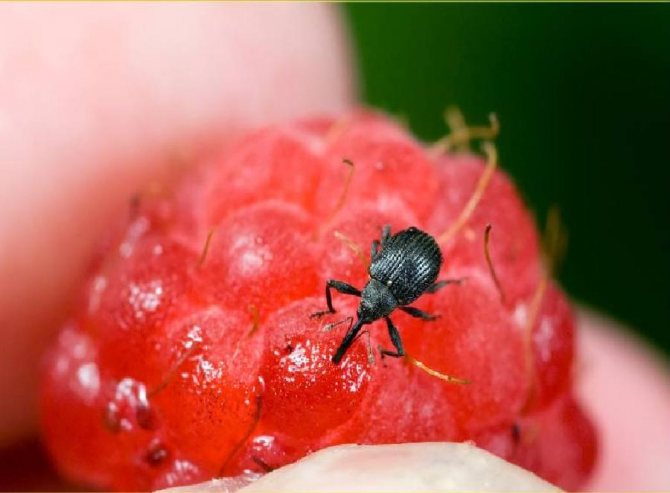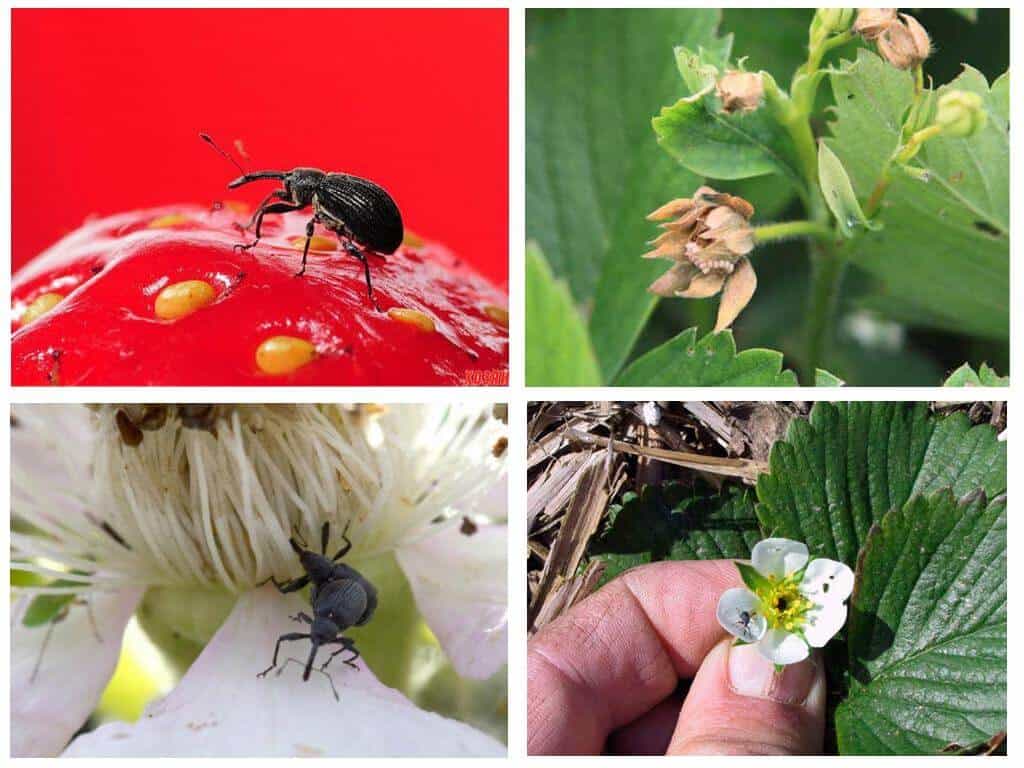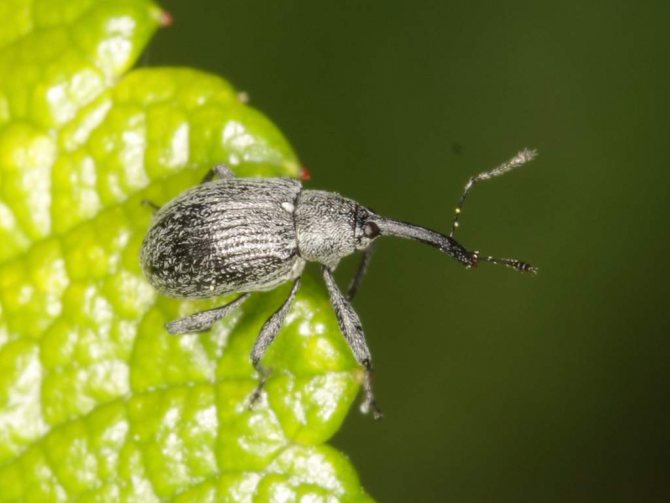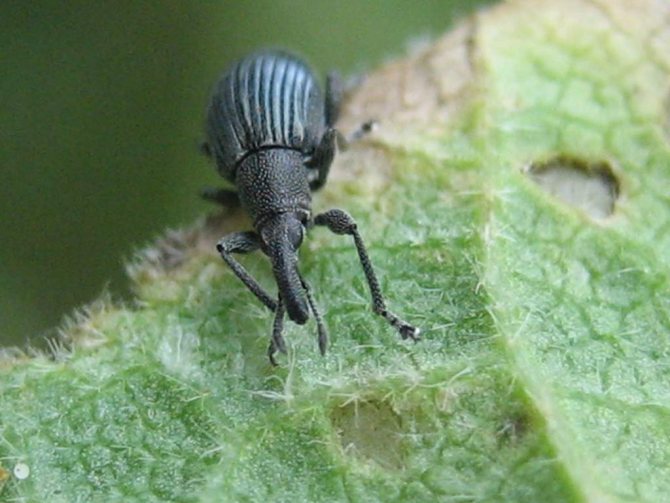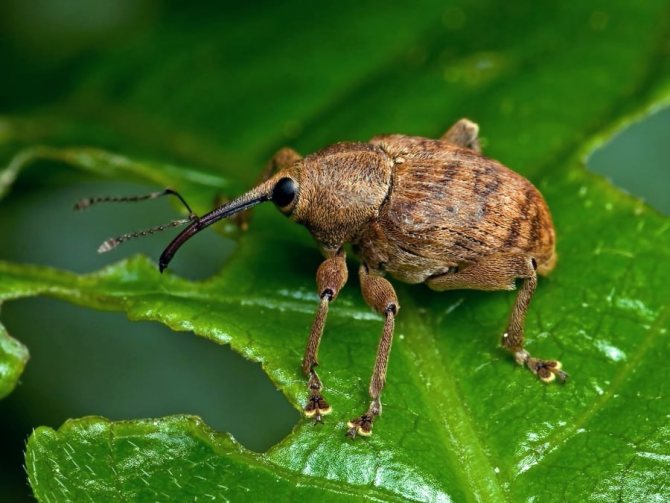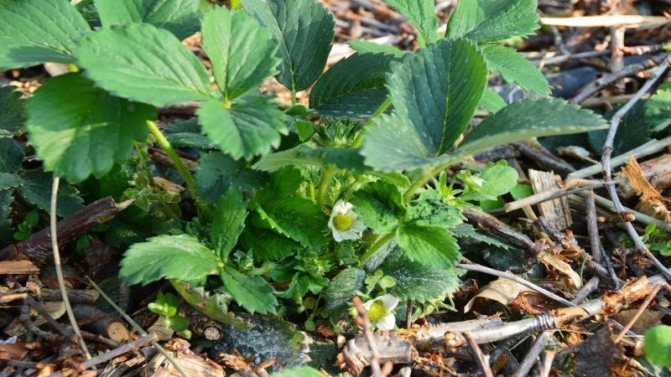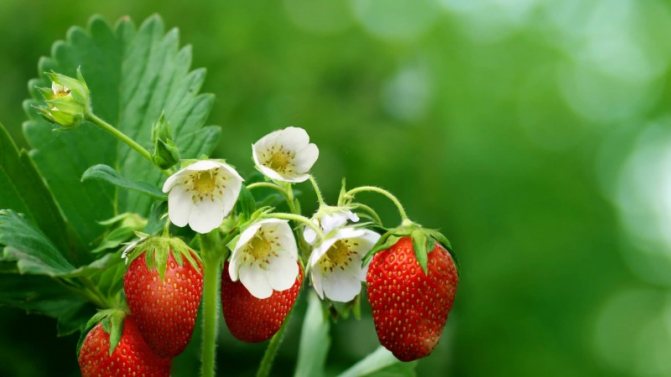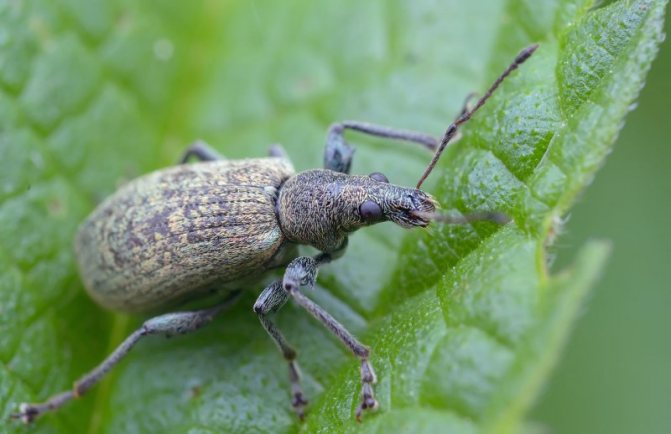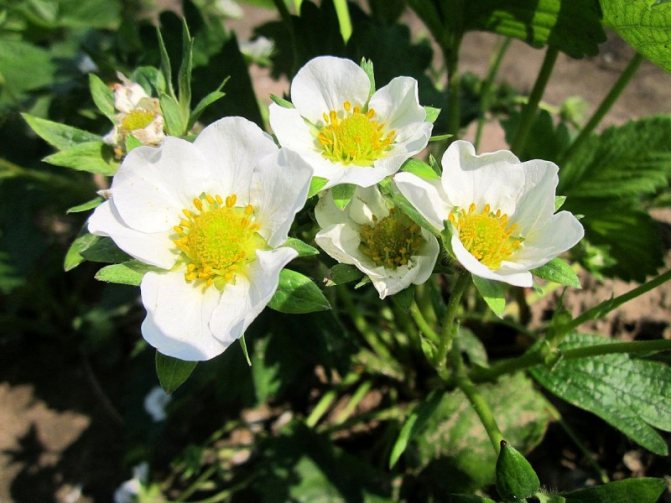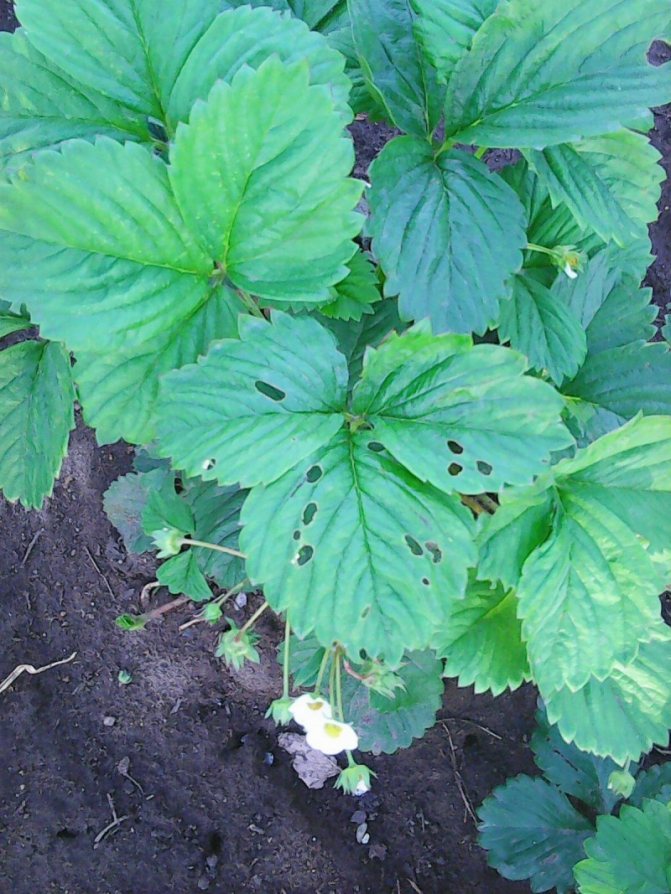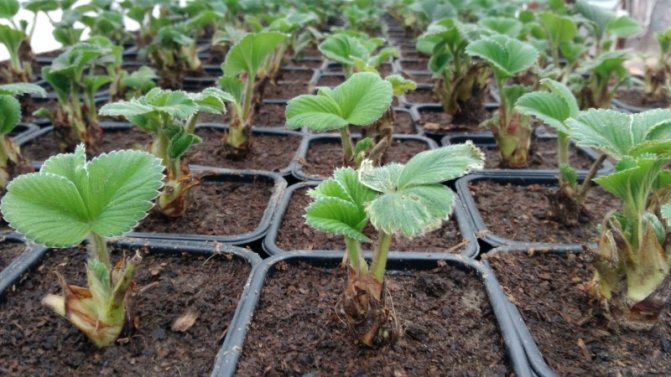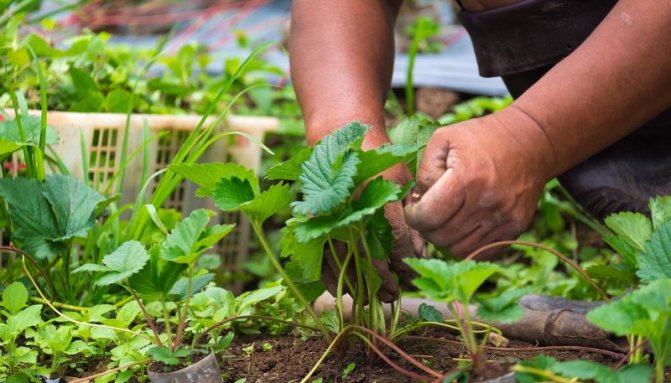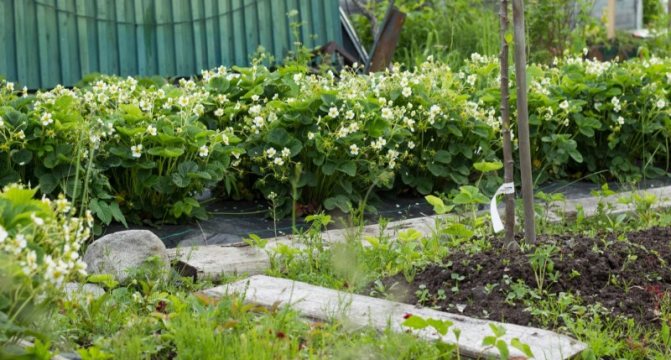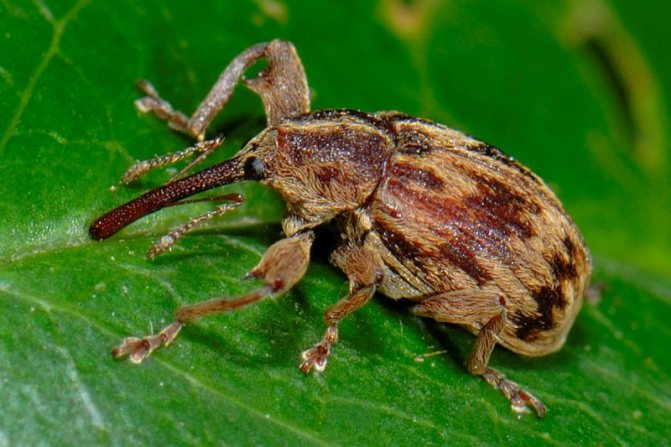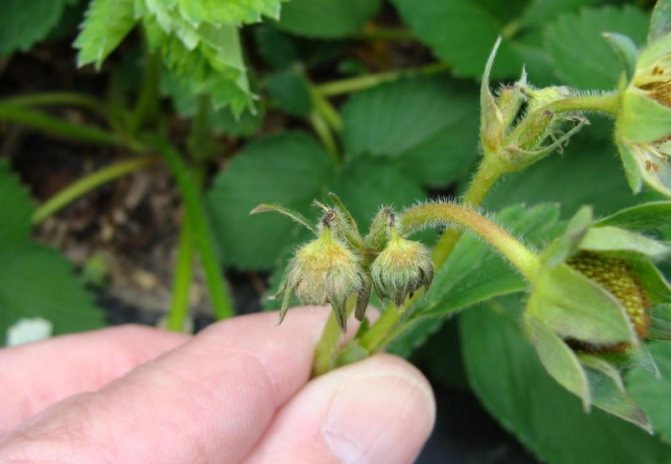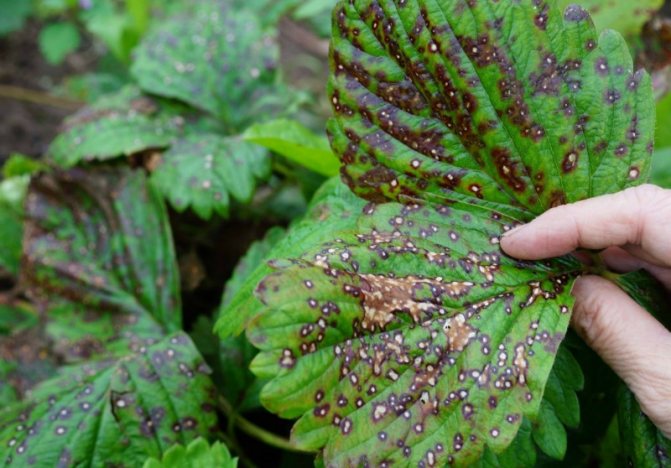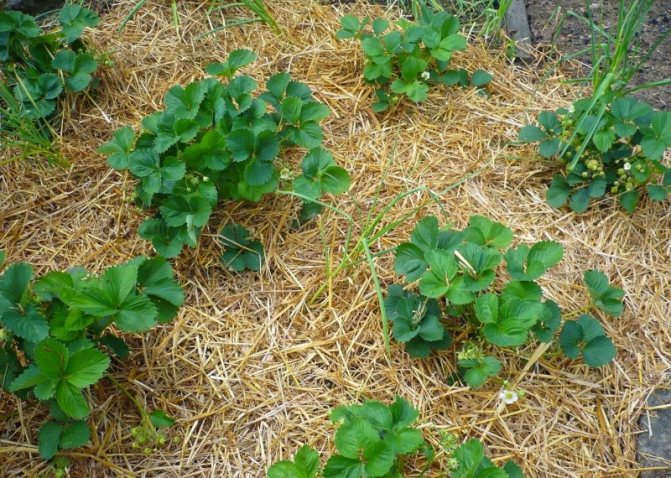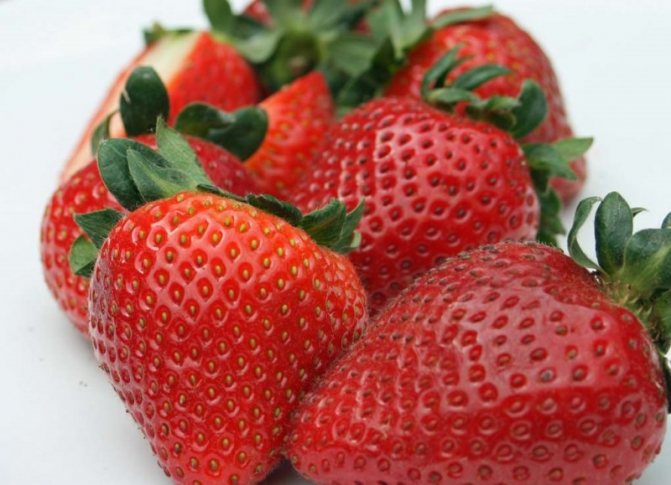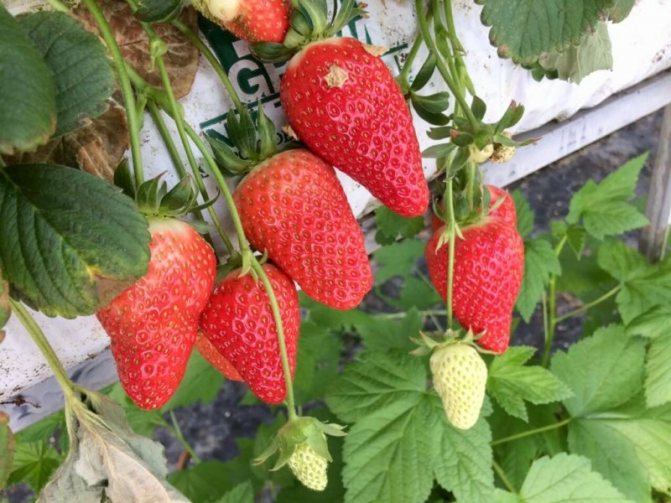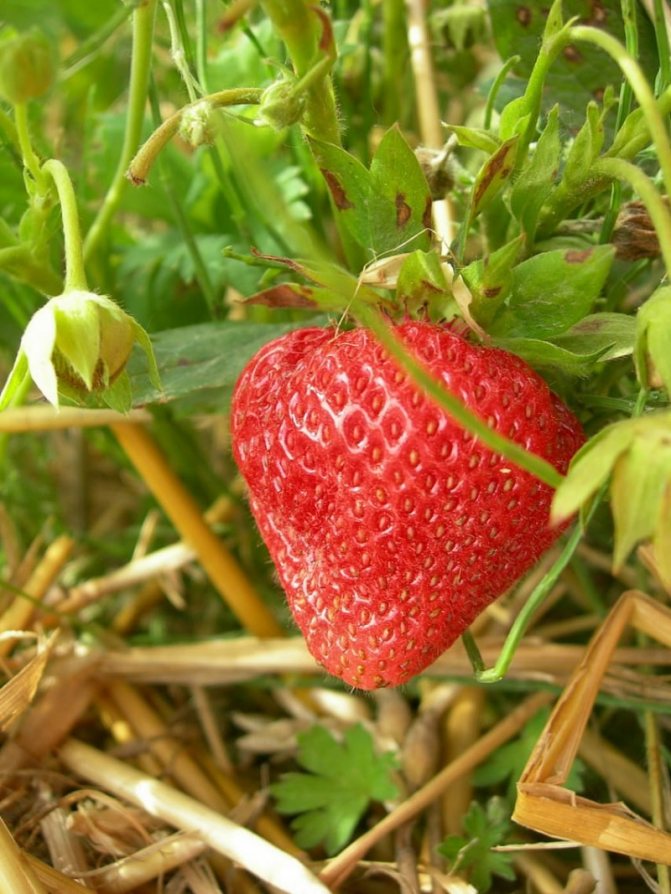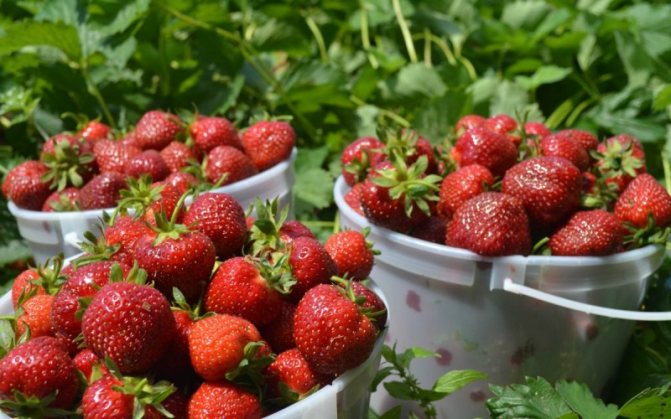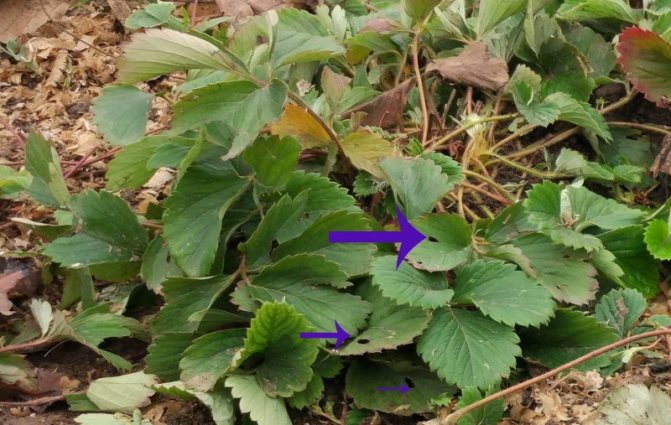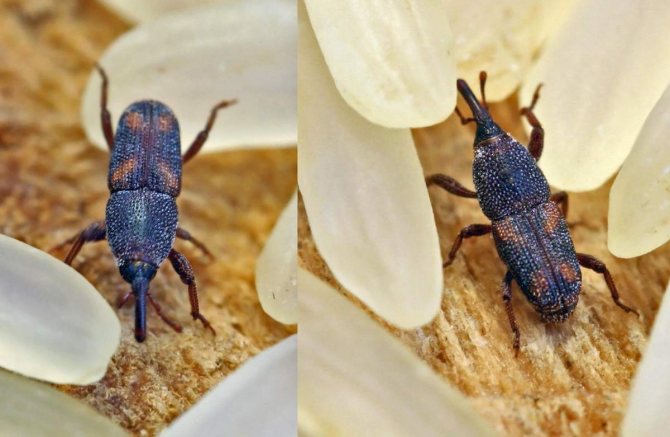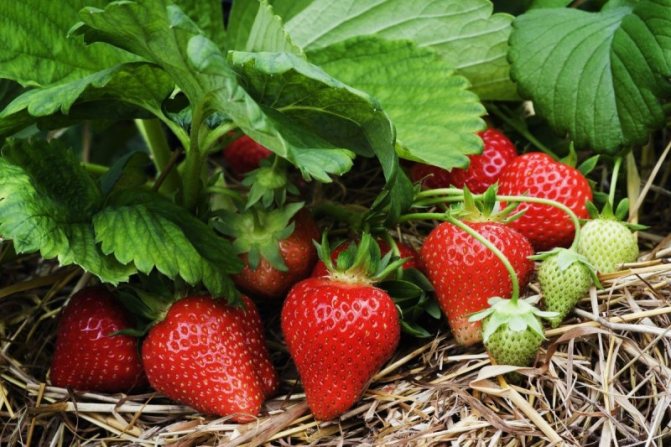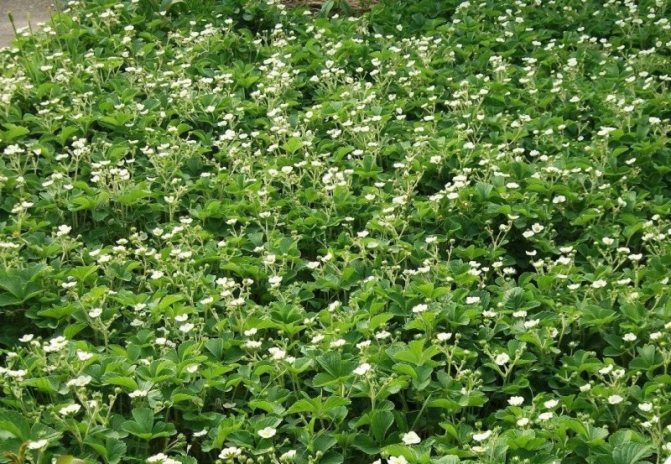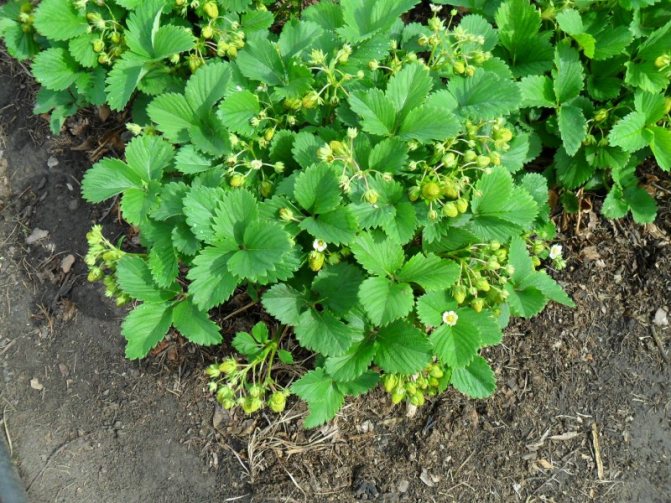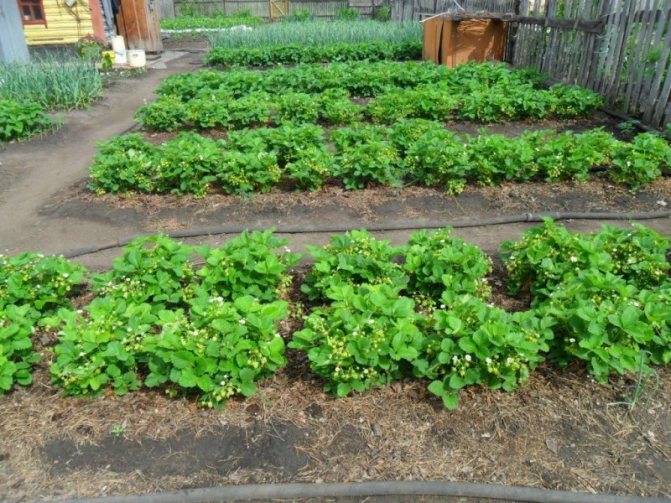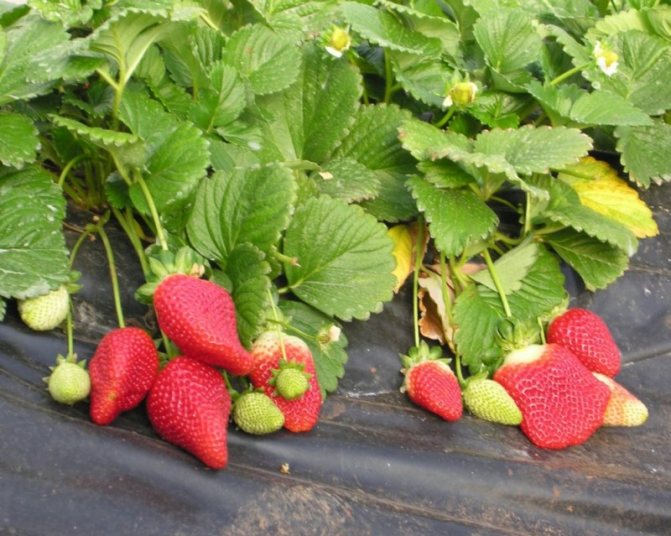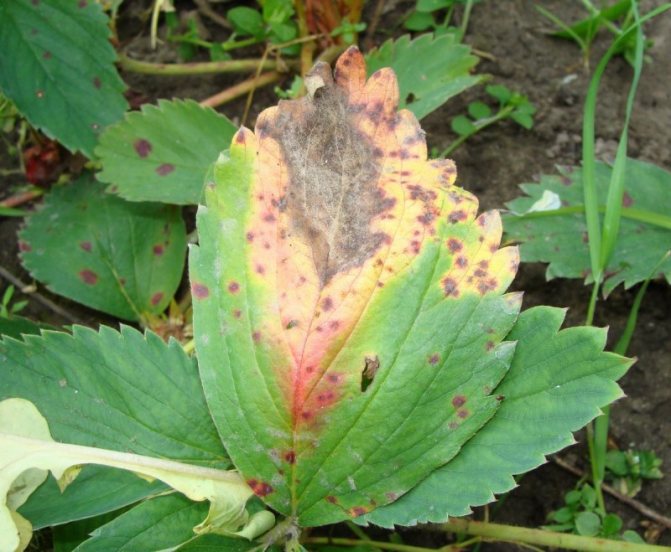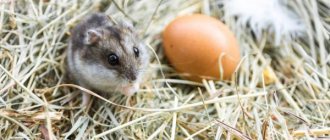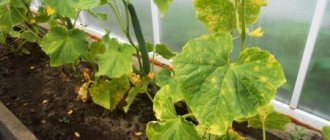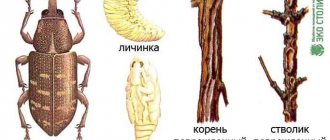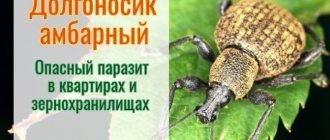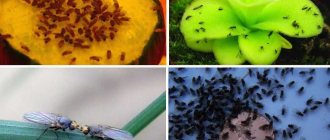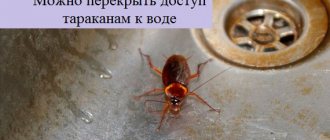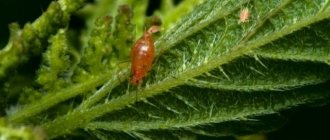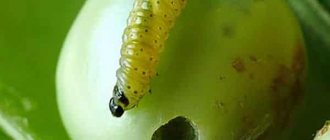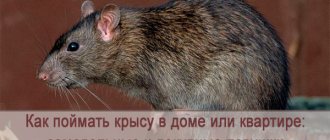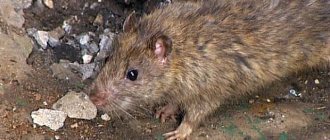A small but gluttonous pest of berry weevils is able to more than halve the yield of strawberry beds. Develops vigorous activity in the spring, when the strawberry begins to bloom. If you miss this moment and do not take measures, it will be much more difficult to get rid of the insect in the future. In addition, after strawberries, the weevil will switch to raspberries, blackberries, rose hips, and you will have to forget about good harvests and these berries.
Raspberry-strawberry weevil, raspberry flower beetle (Anthonomus rubi), a beetle of the weevil family, a dangerous pest of raspberries and strawberries. Body 2.5-3 mm long, black or brownish, densely covered with fine light hairs. Distributed in Europe, Asia, North Africa; in the USSR - in the European part and in Siberia. Damages buds of raspberries, strawberries, strawberries; can develop on wild rose, river gravity. The loss of only 1% of the buds reduces the yield by 0.5-2.5%. Early garden strawberry varieties with more open inflorescences are more damaged.
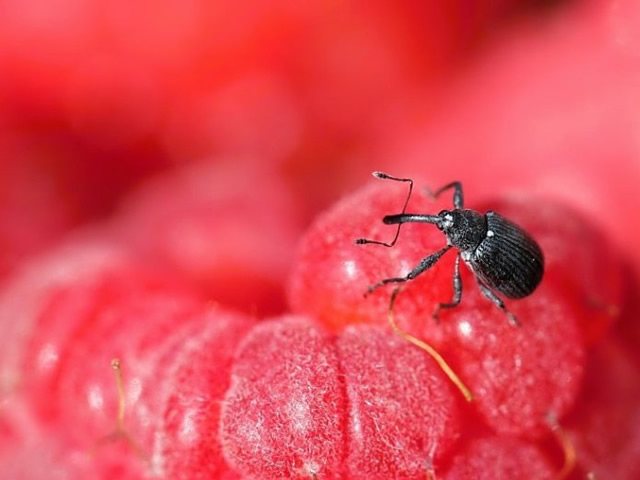
Description of the pest
The weevil is a small insect, reaching a length of 3 mm. It belongs to the Curculionidae family, which includes about 60,000 species of coleoptera. Most weevils are grayish black in color. The reason for the name of the beetle: an elongated head ending in a trunk. With the help of this “rostrum”, the female weevil drills the ovaries, stems and buds of strawberries in order to lay eggs there. Larvae subsequently emerge from them. They use their natural incubator as food, eating up the plant inside.
Rostrum beetles are not capable of long-distance migrations. Some species have no wings at all, while others are undeveloped. Insects, in search of hot spots, crawl around the site or make short-range flights. They hibernate near the plants that served as their incubator.
Description of raspberry-strawberry weevil
The weevil beetle is a small insect with a body length of 3 mm. The color of the body is gray-black, the shape of the body is elongated, resembling a pipe.
It is not difficult to visually detect a weevil; it is enough to carefully consider the flowers and leaves of plants on which the pest likes to settle. Despite its diminutive size, the weevil beetle is capable of destroying most of the crop.
The fruits are "not interesting" for the pest, he prefers to eat the juicy pulp of buds and flowers. In the buds, the female weevil lays eggs, and the hatched larvae are able to completely gnaw the flower from the inside, which will inevitably lead to death.
Weevil activity begins in spring, when the air temperature becomes warm (+12 degrees). After wintering, the beetles fall down hungry, so they greedily pounce on the young leaves of plants, gnawing holes in them. As soon as the flowering period begins, the weevil "switches" to buds and flowers.


What harm does a weevil do?
Tracking individual bugs is almost impossible, but traces of an entire colony of weevils can be seen in early spring or closer to autumn. The following features are characteristic of strawberry bushes:
Small holes on the leaves - traces of punctures by proboscis of insects. If the leaves have turned into a sieve, it means that the volume of the population is approaching the critical one.
Petioles and pedicels wither.If you look closely, you get the impression that they are not completely cut off with a knife. This was the work of the leaf or stem elephant. Peduncles are usually the most beloved of the raspberry-strawberry weevil.
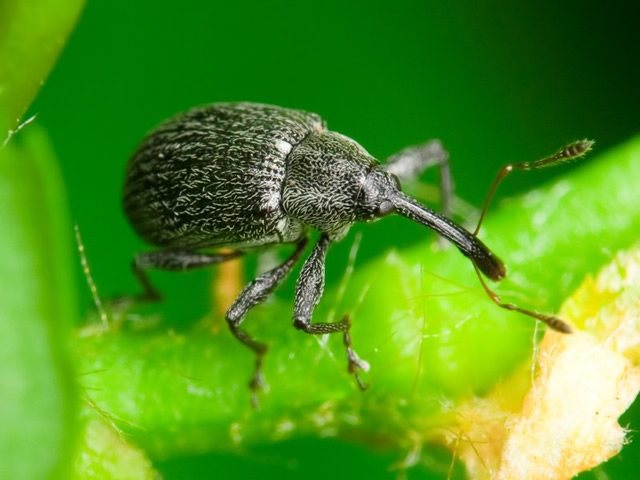

Roots can also be damaged, which the pest eats in a circle. In the ground next to the bush, adults are found, there are larvae or pupae.
Fighting weevil colonies is not difficult, but it must be done on time. Otherwise, the beetles will breed, and the gardener will be left without a crop.
Weevil control with chemicals
Chemicals can be used to suppress the life of the strawberry weevil. Such remedies are very effective, but it is important to remember that they can also harm the plant.
Active agents against weevil are:
- raspberry bushes - Karbofos-500, Iskra-M, Karbofot, Fufanon-Nova, Kemifos;
- strawberries - Alatar, Fufanon, Novaktion, Kemifos.
Plants are treated with chemicals three times - in early spring, summer and autumn, after harvest.
It is recommended to alternate preparations, since treatment with one active ingredient can be addictive in an insect. In this case, you will not be able to get rid of the beetle.
In the process of processing, it is required to strictly adhere to the basics of the instructions for use, observe safety rules when working with chemicals. Processing is carried out in rubber gloves and a protective suit. After spraying, fruits from treated plants cannot be used for food for 1 month.
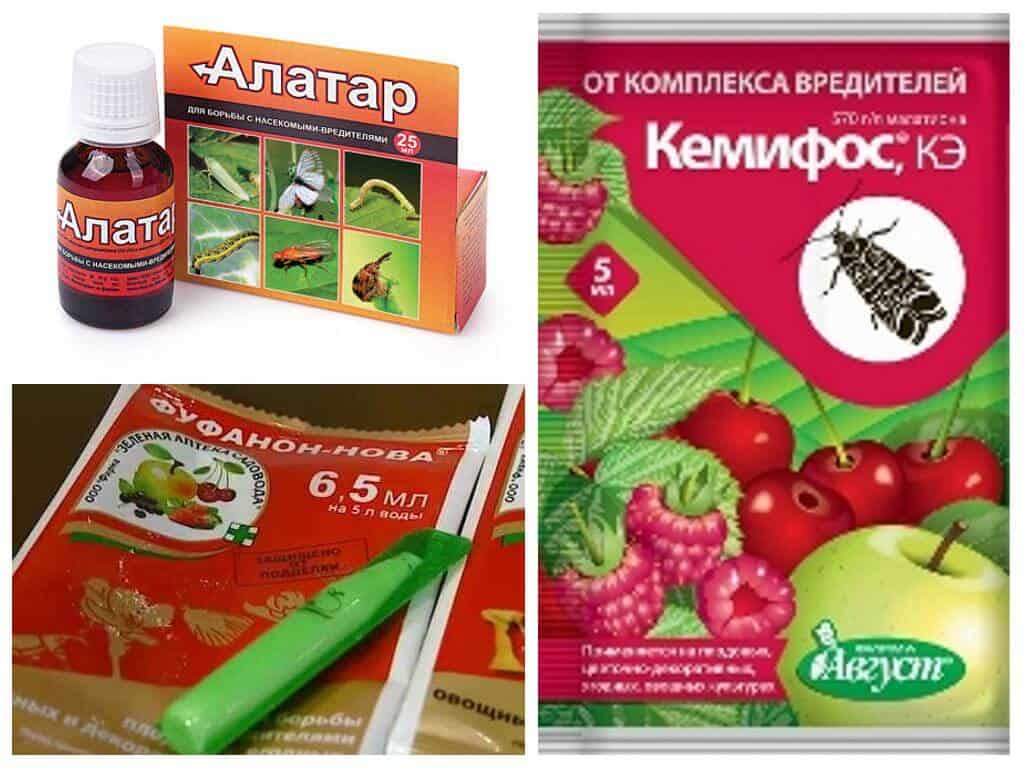

When does a weevil hit a strawberry?
During the season, the female weevil manages to lay about 50 eggs. By the end of summer, adults are hatched. They hibernate and get out of shelters to the surface as soon as the average daily ambient temperature exceeds 13 ℃. At first, the pest feeds on leaves, damages the petioles, then begins to gnaw through the first buds, eating away their contents, and turn them into egg-laying. The insect deliberately chooses the largest buds where the large fruit should have grown. Therefore, it is possible to lose even half of the harvest. Oviposition begins in mid-May and lasts about a month. One egg is laid in each bud, the stalk is gnawed, after a few days the bud will fall off, and after a few days a larva will develop in it, which will feed on the contents of the bud.
The greatest congestion of beetles on fodder plants is observed at a temperature of 18–20 ° C.
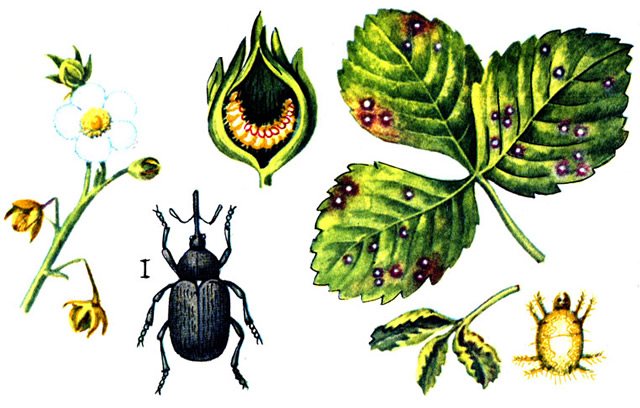

Insect harm
Weevil wintering takes place in the upper layers of the soil. There, since September, under the fallen leaves, the parasite waits for the spring heat and immediately begins to devour young green leaves. With the onset of flowering raspberries, you should be wary of the activity of the beetle.
How raspberry weevils harm:
- Females lay up to 50 eggs per season. The clutches are placed at the base of the raspberry buds. There, a week later, voracious larvae hatch. They gnaw through the opening of the bud and begin to eat away the nutrient tissues of the plant.
- By mid-June, the larvae turn into beetles.
- Adult beetles move to the leaves and eat them. The grower discovers many holes in the leaf.
- In one summer, 2-3 generations of weevil larvae and beetles are hatched. The more insects there are, the more foliage and even stems suffer. All this greatly weakens the plant, as a result, the bushes are left without a crop.
Advice to the gardener In addition to raspberries, the pest affects plantings of rose hips, strawberries, cherries, and rose bushes. Do not plant these crops side by side since they share pests.
How to fight?
The first treatment against pests with chemical preparations or folk remedies must be carried out even before flowering begins, at the stage when the buds have just begun to form. If you stay even just a few days, then the female will have time to lay eggs. A week later, the event is repeated. During this period, a new wave of buds appears.Treatments are carried out in dry, calm weather. If it rains, the solution will wash off the bush, so the procedure will need to be repeated.
Chemicals
Many chemicals are produced with which you can destroy the weevil:
- Calypso - 2 ml. 10 liters. water. Processing at the beginning of budding
- Alatar. Processing before flowering.
- Admiral. A less toxic drug that disrupts larval development. It does not ripen to the state of imago, which means it does not harm strawberries.
- Fitoverm. It differs in that the solution can be used at any stage of strawberry development, as soon as the weevil is found. The warmer, the higher the efficiency. Fitoverm or Aktofit (Ukrainian analogue) also helps well in the fight against a tick. The drug should be used 2-3 times with an interval of 5-7 days. Strawberries can be eaten within a few days after processing.
- Iskra-Bio. A biological agent that is used in hot weather.
- Insecticide Angio. It contains two active ingredients that increase the rate of action of the drug Can be used at any temperature.
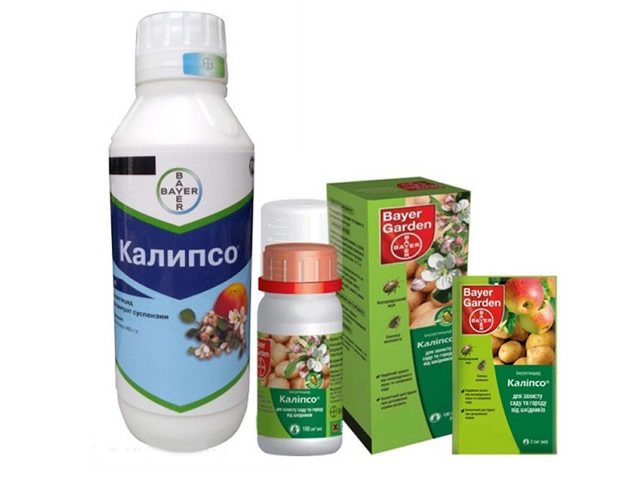

Strong pesticides are Karbofos, Metaphos, Actellik (it also helps against ticks), which act almost instantly. Insecticides of contact action Decis, Taran, Inta-vir are less safe for humans. Unfortunately, they destroy not only weevils, but also beneficial insects, earthworms, and are dangerous for birds.
It is important to carry out chemical treatment in the morning in order to spare as much as possible the useful ground beetles that destroy weevils (1 adult ground beetle eats 20 weevils in 1 day)
Folk remedies
Most of the solutions prepared according to folk recipes of gardeners do not destroy, but scare away the pest. Treatments are done more often than with poisons.
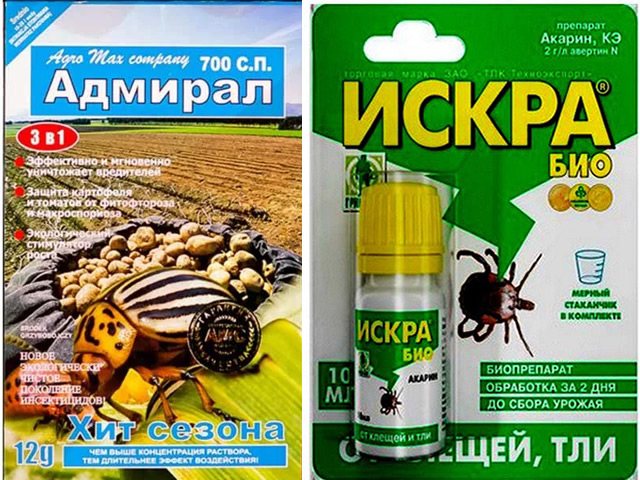

The following recipes are effective:
- Infusion of celandine and onion peel. 1 finely chopped onion and 300 g of celandine herb insist 3 liters for a week. water. First, a concentrated solution is made, which is then filtered and diluted to 10 liters.
- Iodine solution. Half a teaspoon of iodine tincture is shaken in a bucket of warm water and the bushes and the ground around are immediately treated.
- Garlic tincture. Do in an arbitrary proportion, the main thing is that the tincture has a smell. Garlic repels the pest. You can add 1 teaspoon of boric acid to a bucket of garlic tincture. Finely chopped garlic is insisted for at least three days and filtered. Sprayed with liquid, and the cake is laid out between the beds.
- One of the best means of preventing raspberry-strawberry weevil is ammonia. 50 ml. bred in 2 liters. water. This solution is used to treat the entire aboveground part and the ground. This recipe is used several times a season, given that the ammonia quickly disappears.
- Decoctions of tansy and wormwood in an arbitrary proportion are used for multiple spraying.
- Chop 2 hot pepper pods, put in a bucket and scald with boiling water. Top up the bucket with water. An effective remedy for all types of insect pests.
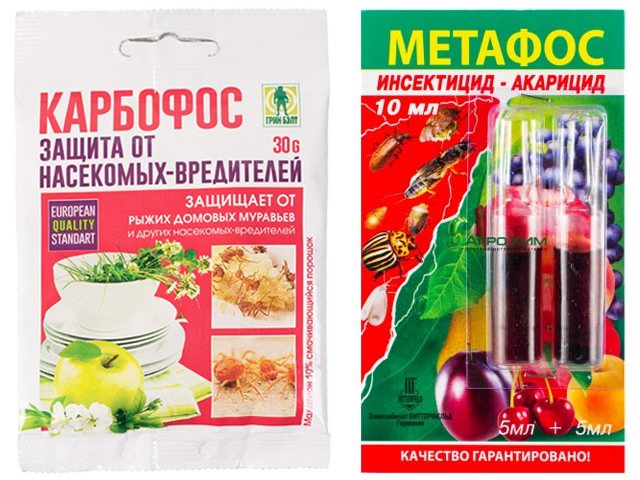

The advantages of folk remedies in their harmlessness to humans and animals. The beds remain clean, the products are environmentally friendly. Can be used even during fruiting.
Weevil chemicals
When choosing products for processing garden strawberries, study their composition. You need a drug that is safe for bees: just at this time, they are massively flying out to blooming plants everywhere. Fitoverm, Admiral, Engio and Iskra-bio are effective in destroying adult beetles and at the same time non-toxic to bees.
Spraying garden strawberries with an insecticidal solution should be carried out on a dry, windless morning. Read the instructions carefully and find out for yourself at what temperature you need to process. Keep in mind: if it rains after spraying, the treatment will have to be repeated.
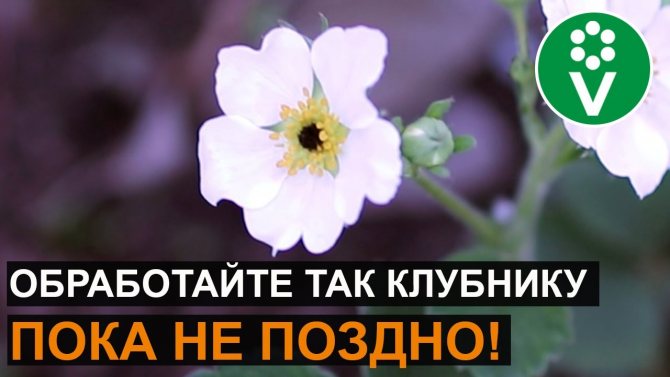

Prophylaxis
The complex of preventive measures includes spraying strawberry bushes with the onset of spring and until autumn with any solutions from folk recipes, regular weeding and loosening of the beds, removing dried leaves and debris, placing new beds with strawberries at a distance of more than 500 m. From the old ones (realizable sooner at on farm plots). If the story with the weevil repeats itself from year to year, it makes sense to attract natural enemies of the pest to the garden - birds, ants, wasps. Strawberry seedlings purchased from an unknown manufacturer must be washed with a manganese solution before planting.
In mid-August, pupated beetles prepare for hibernation and are as vulnerable as possible. With the help of simple agricultural techniques, you can prevent the appearance of beetles in strawberry beds in the next season:
- cut off old leaves on strawberries, leave only the middle of the outlet;
- remove weeds in the aisles;
- spray the garden with any insecticide;
- after 7 days, thoroughly loosen the soil and repeat the treatment.
The chemical preparation can be replaced with a solution of mustard powder. Dilute 200 g of mustard in 8 liters. water, add 50 g of liquid soap for adhesion.
For the winter, strawberries can be densely mulched with coniferous needles. As a rule, pests avoid such areas. Dusting with wood ash gives a good effect. If the beetle does not crawl from the neighbors, it will not be on the strawberry garden next year after such treatments.
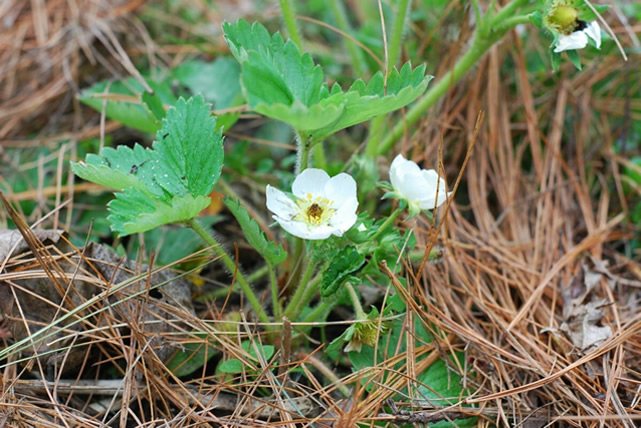

The weevil is discovered too late, when it has already done its dirty deed. The damage they do is irreparable. Therefore, there is no need to wait for the consequences of its vital activity, but to carry out preventive measures and process the bushes before flowering.
Natural enemies
Other ways to deal with the raspberry weevil is to help its natural enemies. The beetle feeds on domestic chickens, bedbugs, ground beetle larvae, hover flies.
Beetles will not like the neighborhood with onions and garlic. Plant these plants between beds of raspberry bushes.
Remember that it is much more convenient to deal with a weevil on raspberries before it gets out of the soil, that is, in autumn and early spring. Take all preventive measures, especially if the pest was seen on plantings earlier. Do not ignore garden strawberries: the weevil begins its activity from it after it wakes up from hibernation.
Signs of the presence of a harmful beetle in the garden
The main symptoms indicating the presence of weevils on berry crops include the following characteristic phenomena:
- small holes or punctures in the early foliage of strawberries;
- brown buds of berry culture;
- a large number of fallen, as if cut off inflorescences;
- on the bushes, you can see buds overflowing and hanging on a dried leg.
The presence of at least one of these phenomena indicates that the strawberry weevil has settled in the garden
Weevil protection measures
When solving the problem of how to save raspberries from a weevil, one should not forget about preventive measures.
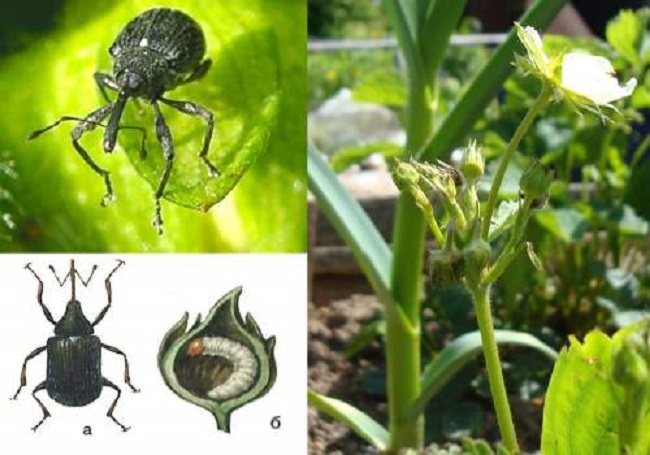

Pest development
- Destroy underground "inhabitants" by digging up land strips between rows.
- Thin bushes.
- Periodically (after 3-4 years) update the planting of strawberries, raspberries. On older bushes, many pests are concentrated.
- Shake off beetles that have woken up from hibernation and crawl onto raspberry bushes. Spread tarp, oilcloth or polyethylene under them. After that, the pests are destroyed. Shaking is performed during the imago summer, after the end of the raspberry harvest (at the end of August).
- Try to plant early ripe strawberries (strawberries).
- Plant black shaves, garlic, lilies of the valley, Kapuzinerkresse (nasturtium) between the rows of strawberries and raspberries. When the first flowers appear, the tips of the garlic tops are gradually cut off. Or green shoots are rubbed. A strong, deterrent smell is created.
- Crops that fall into the damaged zone (strawberries, apple trees, raspberries, strawberries,) are planted further away from each other.
- Collected diseased shoots, burned sheets.
- Cleaning and disposal of garden waste in the spring.
- Periodic inspection of the raspberry tree.
- If a weevil is found on raspberries, beetles and larvae are collected by hand.
- Ground beetles are attracted to the garden. Each of them eats about 25 weevils in one day.
About the pest and its danger for strawberries
Photo:
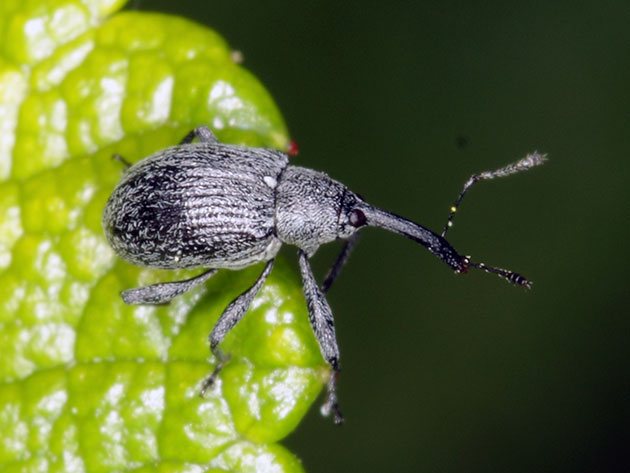

If the gardener has not encountered weevils before, he will not immediately detect them. By that time, the beetles will gnaw the stems, antennae, and the larvae of the flower buds. A plantation during flowering can lose up to 50% of flowers, which means ovary and harvest.
Before our eyes, the seedlings will fade, and the buds will crumble to the ground. Berry ovaries with young rosettes will also disappear. Therefore, it is so important to determine as early as possible which pest attacked the strawberries and take action.
If there are only a few elephant beetles in the garden or a small colony, then it is not difficult to destroy them. Worse, when they breed and are found throughout the site, crawl over and settle with neighbors. After trying other crops, insects will choose tasty ones and take care of them.
Chemical and folk remedies are used to destroy pests. If insects are not exterminated in 1 year, it will take at least 2-3 years of active struggle with various drugs, folk methods.
About weevils
The elephant beetles are recognizable. They have an oblong body and a head with an elongated trunk. There are 60 thousand species in total. Beetles come in different colors and sizes. Females lay eggs on stems, in plant roots or on leaves, fruits, with buds.
The larva, upon hatching, will eat the greens from the inside. Then a beetle will pupate and hatch from the pupa, which will feed on various greens (berry bushes, vegetable tops, buds and fruits, herbs).
What types of pests are there?
In the vastness of Russia, the most common such elephant beetles are:
- Raspberry-strawberry (light gray). They live in Altai and Siberia. They grow by 2-3 mm. They eat strawberries with raspberries, blackberries, rose hips.
- Rough or turnip (gray with brown). They have oval bodies. They grow up to 7 mm. They are found in the north in the taiga and live in the steppes. The larvae eat the roots, the adult buds with the tops of various berries and vegetables.
- Small black skosari weevils (black or dark brown). Adult beetles grow up to 5 mm. They live in the European regions of Russia. They love berries, alfalfa, with beets, coniferous sprouts. The larvae feed on the roots.
- Alfalfa skosari reach a length of up to 12 mm (silvery-black, with grayish-yellow hairs). They are found in the southern part of Siberia, in the Caucasus and in the European regions of Russia. The larvae feast on the roots of the plants.
- Furrowed skosari (dark brown or black with golden spots). Adults reach a size of 10 mm. They eat everything. They love berry plants, vegetables, grapes and even decorative flowers. They attack greenhouses, with nurseries in which plants are grown.
Other species of weevils also readily eat strawberries. Therefore, site owners use different insecticides that destroy different types of beetles.

